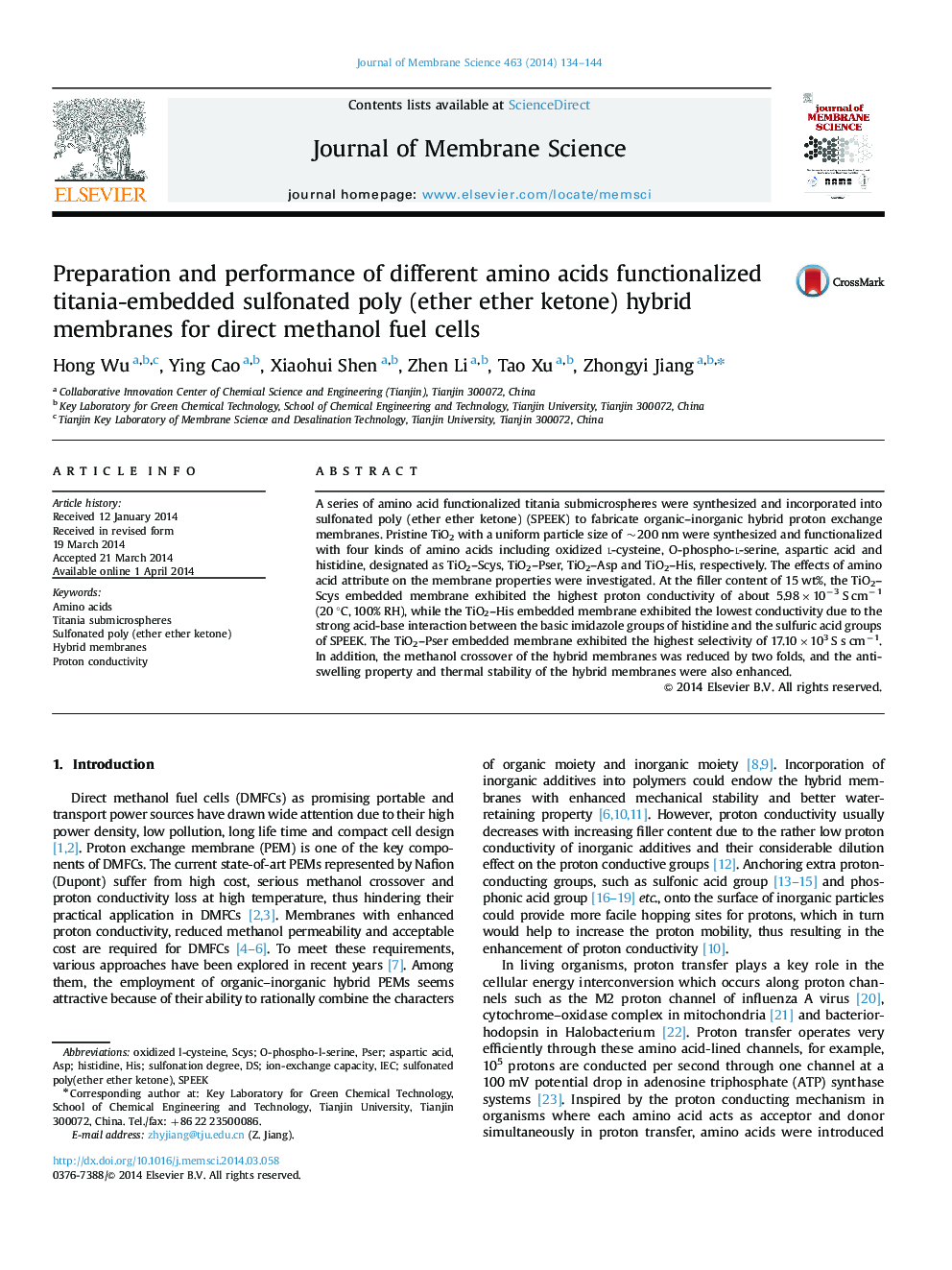| Article ID | Journal | Published Year | Pages | File Type |
|---|---|---|---|---|
| 633606 | Journal of Membrane Science | 2014 | 11 Pages |
•Titania submicrospheres modified with four kinds of amino acids were synthesized.•The submicrospheres were incorporated into SPEEK to prepare hybrid membranes.•Effect of different amino acids on proton conductivity of PEM was studied.•The hybrid membranes showed enhanced proton conductivity and methanol resistance.
A series of amino acid functionalized titania submicrospheres were synthesized and incorporated into sulfonated poly (ether ether ketone) (SPEEK) to fabricate organic–inorganic hybrid proton exchange membranes. Pristine TiO2 with a uniform particle size of ~200 nm were synthesized and functionalized with four kinds of amino acids including oxidized l-cysteine, O-phospho-l-serine, aspartic acid and histidine, designated as TiO2–Scys, TiO2–Pser, TiO2–Asp and TiO2–His, respectively. The effects of amino acid attribute on the membrane properties were investigated. At the filler content of 15 wt%, the TiO2–Scys embedded membrane exhibited the highest proton conductivity of about 5.98×10−3 S cm−1 (20 °C, 100% RH), while the TiO2–His embedded membrane exhibited the lowest conductivity due to the strong acid-base interaction between the basic imidazole groups of histidine and the sulfuric acid groups of SPEEK. The TiO2–Pser embedded membrane exhibited the highest selectivity of 17.10×103 S s cm−1. In addition, the methanol crossover of the hybrid membranes was reduced by two folds, and the anti-swelling property and thermal stability of the hybrid membranes were also enhanced.
